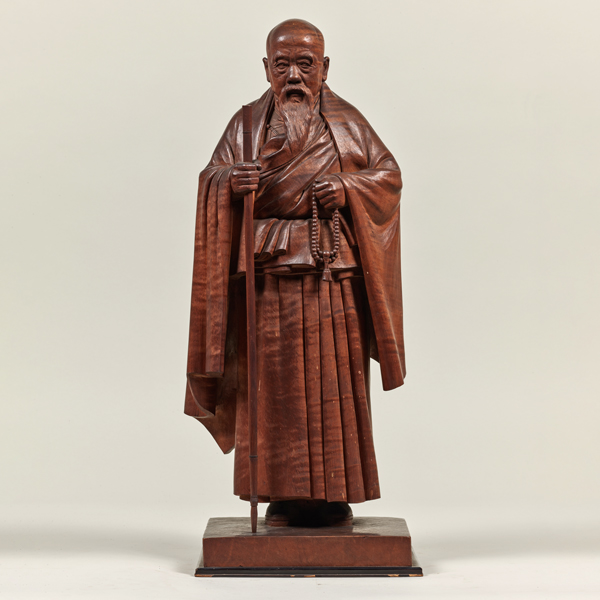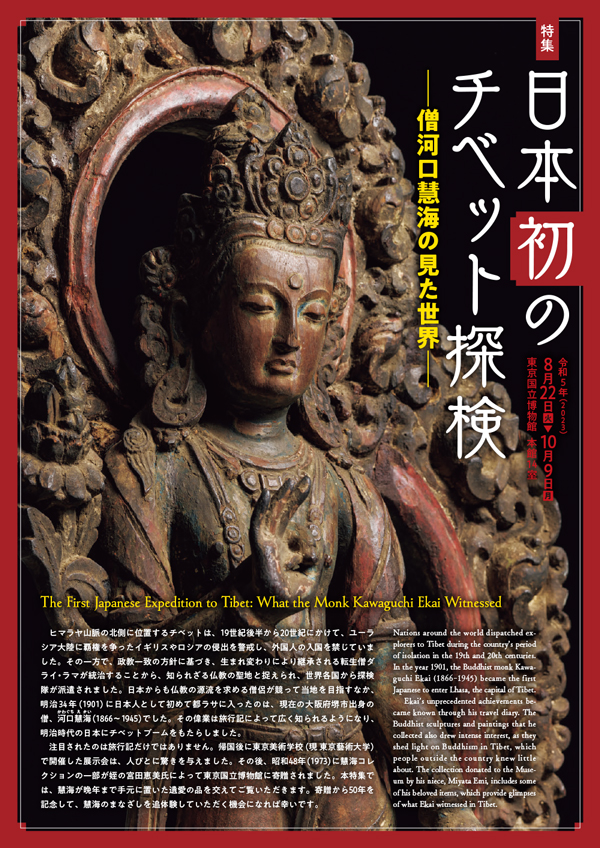Japanese Gallery (Honkan) Room 14
August 22, 2023 (Tue) - October 9, 2023 (Mon)
Nations around the world dispatched explorers to Tibet during the country’s period of isolation in the 19th and 20th centuries. In the year 1901, the Buddhist monk Kawaguchi Ekai (1866–1945) became the first Japanese to enter Lhasa, the capital of Tibet.
Ekai’s unprecedented achievements became known through his travel diary and an exhibition held at the Tokyo School of the Arts (now the Tokyo University of the Arts). The collection donated to the Museum by his niece, Miyata Emi, includes some of his beloved items, which provide glimpses of what Ekai witnessed in Tibet.


